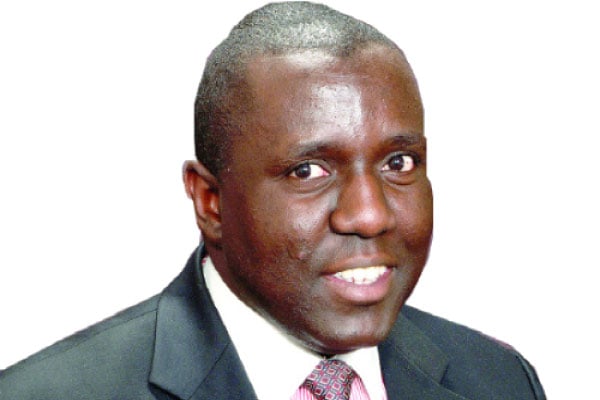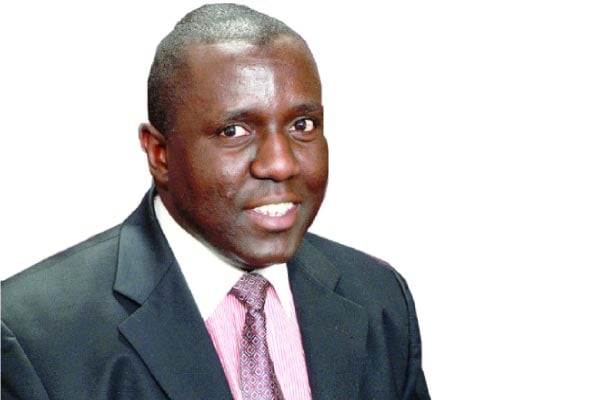The life, times of Archbishop Cyprian Lwanga (1953-2021)

Author: Mr Karoli Ssemogerere is an Attorney-at-Law and an Advocate.
What you need to know:
He never wore the snow white fur and red shoes his predecessor favoured.
One of my oldest letters is from the then bishop of Kasana Luweero, Cyprian Kizito Lwanga, then a freshly installed Bishop and former chancellor of Kampala Archdiocese. It may be the only letter from a Catholic bishop I have, I perhaps only met him sporadically in the ensuing years. As he settled into the seat of the archbishop he gave particularly long sermons to connect with his congregation. In his latter years, he adopted a new matter-of-factly style. As the last polls neared recently, he actually took an aggressive stance, challenging the State for its high-handed approach to its opponents. The fire under his seat made it difficult to say otherwise as many Catholic priests, especially in the Central region openly supported a new face on Uganda’s political scene Robert Sentamu Kyagulanyi, itself a first. But in between his ordination as bishop, appointment as archbishop replacing Cardinal Emmanuel Wamala, many things have happened in the Catholic Church in Uganda.
First is the struggle of the Church to adopt to the changing times. The ministry of the Kampala metropolitan has been a guide to many things. In the runup to Independence, Joseph Kiwanuka born in 1899 tussled with the Buganda question and ended up on the losing side when Mengo allied with UPC in exchange for indirect elections to the National Assembly in 1962, a myopic decision that defined the future of Uganda, especially after UPC and KY fell out and later nearly all KY members defected to UPC. Uganda’s first president, Edward Muteesa deposed by Milton Obote in 1966 escaped from the palace through Bishop Kiwanuka’s residence in Lubaga on his way to a short but very bitter exile where the British abandoned him to penury but also on the altar of economic interests refrained from pushing further Milton Obote to allow the deposed Kabaka sell some of his assets in Uganda as Obote probably believed they would be used to depose him. Needless to say, the same invisible hand was happy to let Obote go in 1971 in favour of Idi Amin, an upstart military colonel. Kiwanuka’s tenure as the first Ugandan Archbishop was short and stormy. He died age 67 and for years his body was preserved in the corner of the cathedral.
Emmanuel Kiwanuka Nsubuga born in 1914 who replaced Kiwanuka in 1966 and served until 1991 served longest. Of a more modest education background than Kiwanuka, Nsubuga, the son of pastoralists, had a more regal posture and command of his position. He served during Amin’s time, a very difficult time, through the turbulent years of UNLF and Obote II where he ministered to the vast population displaced by the NRA insurgency, which he is believed to have supported. He is said to have played a role first in the UNLA coup against Milton Obote and later was a crucial pillar of support of the young NRM administration.
In 1989, the Vatican took exception to the overt politicisation of the Catholic Church which counted a number of Catholic priests as Members of Parliament. Infact, Kabarole District elected two catholic priests to Parliament. These joined another historical MP, Fr. Leo Seguya, who had sat in the chamber since 1986. A limited exemption allowed priests to continue in the civil service, including Fr Pius Tibanyendera,the longest serving PS in the Ministry of Education. Nsubuga, later, frustrated gave his last major address in 1989 at the time the NRC extended the interim period to 1995 and spent his final years quietly, as Vatican in 1991 appointed Emmanuel Wamala born in 1926 as Bishop Co-adjutor and later Archbishop and Cardinal.
Cardinal Wamala was a first in many respects. He had benefited from a secular background, having served as Chaplain of St. Augustine Makerere. His first diocese Kiyinda Mityana was ravaged by war, but like Luweero, had more Anglicans than Catholics. Compared to the brusque style of his predecessor he was soft spoken probably more pious than political. He never wore the snow white fur and red shoes his predecessor favoured even when the Cardinal emeritus one time conducted a fundraiser for him to be properly dressed as Archbishop. However, Wamala’s is often underestimated yet he was perhaps very effective as Archbishop. Among his successes was the actualisation of Uganda Martyrs University Nkozi and the development of Mapeera House.
Lwanga looked more like Wamala’s predecessor and had been groomed early for this job. He entertained an aggressiveness and seriousness that shook up the passive culture of his time. In this, he was both expected and unexpected. In his early years he was much closer to the political class and formalistic in presentation. But in his later years, the structure of society posed a challenge. Less dogma, less theology, more evangelism left the church leader struggling to show leadership. In Lwanga’s time, the position was also diminished by the creation of three new metropolitans, Gulu, Mbarara and Tororo. The Church, like many institutions in Uganda of yesterday is struggling to find its voice and relevance in the face of demographics, the information age and upending of social structures that favoured its rise in the last century.
Mr Ssemogerere is an Attorney-At-Law and an Advocate. [email protected]




